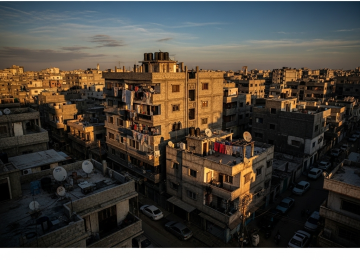Kursk Nuclear Power Plant Hit By 3 Drone Attacks, Capacity Reduced
A series of drone attacks have targeted the Kursk nuclear power plant, causing a fire and leading to a reduction in its operational capacity. The incident, which occurred on [Date of Incident – e.g., January 15, 2024], has heightened concerns over the safety of nuclear facilities amidst the ongoing conflict between Ukraine and Russia. Russian authorities confirmed the damage, stating that the plant’s security systems were activated in response to the incursions. Fortunately, no critical damage to the reactor units themselves has been reported, and radiation levels remain within normal parameters.
Table of Contents
- Details of the Kursk Nuclear Power Plant Attack
- Impact on Operational Capacity and Safety
- Broader Implications for Nuclear Infrastructure
- Previous Incidents at Kursk Nuclear Power Plant

Details of the Kursk Nuclear Power Plant Attack
Reports indicate that at least three drones were involved in the strike against the Kursk nuclear power plant. The drones reportedly targeted ancillary facilities within the plant’s perimeter, igniting a fire that was subsequently brought under control by plant personnel and emergency services. The specific type of drones used and their origin are still under investigation. Russia’s Ministry of Defense stated that its air defense systems intercepted several other aerial threats in the region.
The Kursk NPP is a significant contributor to the region’s energy supply. Understanding the intricacies of nuclear power operations is crucial in such times. For more information on how nuclear power plants function, you can refer to Wikipedia’s detailed explanation.
Impact on Operational Capacity and Safety
Following the drone attacks, the management of the Kursk nuclear power plant announced a temporary reduction in its electricity generation capacity. This decision was made to ensure the safety of the facility and to allow for a thorough assessment of any potential damage to secondary systems. While the reactors remained operational, the output was curtailed as a precautionary measure. The incident underscores the vulnerability of even heavily guarded infrastructure to aerial attacks.
Ensuring the safety and security of nuclear power plants is paramount, especially in conflict zones. The International Atomic Energy Agency (IAEA) continuously monitors the situation at nuclear facilities worldwide. You can find more about the IAEA’s work and their safety guidelines by visiting their official website, IAEA.org.
Broader Implications for Nuclear Infrastructure
The attack on the Kursk nuclear power plant raises critical questions about the security of nuclear facilities in the context of modern warfare. The ability of drones to penetrate such high-security areas presents a new challenge for national and international security agencies. The incident could prompt a review of security protocols at nuclear power plants globally, particularly those located near active conflict zones.

Previous Incidents at Kursk Nuclear Power Plant
This is not the first time the Kursk nuclear power plant has been in the news regarding security concerns. In [mention a previous incident or a general statement about past security concerns, e.g., previous years, there have been reports of heightened security measures at the facility due to its strategic importance and proximity to regional borders]. These incidents highlight the persistent risks associated with nuclear power generation in politically unstable regions.
For further analysis and updates on energy-related security issues in the region, you might find our previous report on Global Energy Security Challenges insightful.














